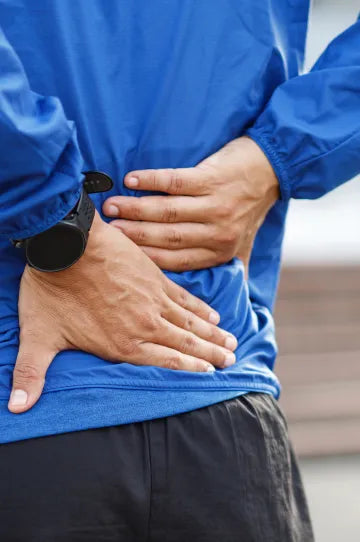





Best treatment for sore muscles after workout—easy home tips, when to use ice or heat, and post-workout inflammation treatment that actually helps.
You smashed your session. Now the legs feel heavy and the stairs look scary. The best treatment for sore muscles after workout is simple: gentle movement, smart cold/heat use, sleep, and a few natural helpers. Below is a clear plan you can follow today.
After a new or harder workout, tiny muscle fibres develop micro-tears. Your body repairs them stronger. The ache you feel 12–48 hours later is called DOMS (delayed onset muscle soreness). Mild soreness is normal. Sharp, sudden, or joint pain is not.

Keep moving—lightly. Short walks, easy cycling, or gentle yoga increase blood flow.
Hydrate well. Fluids help your body clear by-products from exercise.
Eat protein + carbs. Think dal–rice, curd with fruit, paneer bhurji, eggs, or sprouts.
Try cold packs in the first 24 hours if an area feels hot or puffy.
Sleep 7–9 hours. Recovery hormones work while you rest.
Use ice (10–15 min, wrapped) in the first 24 hours if there’s swelling or the area feels warm.
Use heat (15–20 min, warm not hot) from day 2 onward to relax tight muscles and improve movement.
Never put ice or heat directly on skin. Wrap it.
If pain increases with either, stop and switch to gentle movement.
Active recovery: 15–20 minutes of easy movement speeds blood flow.
Foam rolling: Slow, light passes on quads, calves, glutes, back. Pause on tender spots for 20–30 seconds.
Stretching: Short, comfortable stretches after you’re warm. No bouncing.
Compression: A light sleeve or wrap can reduce heaviness.
Warm bath or shower: Comforts muscles and mind.
Magnesium from food: Nuts, seeds, leafy greens, legumes. If you consider supplements, speak to a professional.

Yes—gentle support that helps your body settle. Ayurveda focuses on balance, circulation, and calm. Ingredients like turmeric, ashwagandha, ginger, and wintergreen (in topical blends) are often used to support comfort, reduce the feeling of stiffness, and relax tense areas. Think of it as support for the body’s natural repair, not a quick “cure.”
Amiy’s approach uses Bio-Neuromodulation™ (helping nerve communication balance) and a Complex Plant Elixir™ (synergistic botanicals) to support recovery signals and comfort.
Day 0–1 (right after the workout to 24 hours)
Day 2
Day 3–4
Seek help if you notice: very sharp pain, swelling that grows, visible bruising, numbness, fever, dark urine, or if you cannot put weight on a limb. These are red flags. For personal advice, speak to a qualified healthcare professional.
Gentle, natural support you can consider. Topical and internal botanicals can support comfort while your body repairs itself.
How to Relieve Sore Muscles After Workout: Fast, Natural Tips
Treatment for Joint Pain and Stiffness: Simple Natural Relief | Amiy Naturals
A1: Start with active recovery, good hydration, and a balanced meal. Use ice in the first 24 hours if a spot is hot or puffy, then switch to heat from day 2 for stiffness. Add gentle stretching and foam rolling.
A2: You can move, but keep it light. Easy walks, cycling, or yoga are fine. Avoid heavy lifting for the same muscle group until soreness settles.
A3: They may reduce discomfort, but they can mask signs your body uses to guide recovery. For frequent use or stronger medicines, speak to a professional first.
A4: Ice helps early when there’s swelling or warmth. Heat helps later to relax tight muscles. Use a cloth barrier; 10–20 minutes per session.
A5: Ayurvedic botanicals like turmeric, ginger, and ashwagandha may support comfort and calm. They work best with sleep, hydration, and active recovery.
A6: Usually 2–3 days. If pain is sharp, you have big swelling, or function is limited, seek medical advice.
If you want gentle, plant-based support while you recover, explore Muscle Mercy — a doctor-formulated blend designed to support everyday body comfort after activity. Pair it with steady sleep and light mobility for best results.
Looking to improve nightly recovery? Consider a calming routine and, if suitable, a natural sleep support like Tranquil Tonic. Recovery starts when you rest.